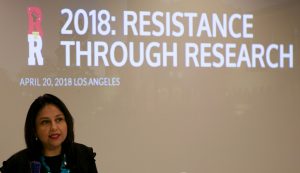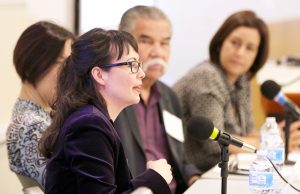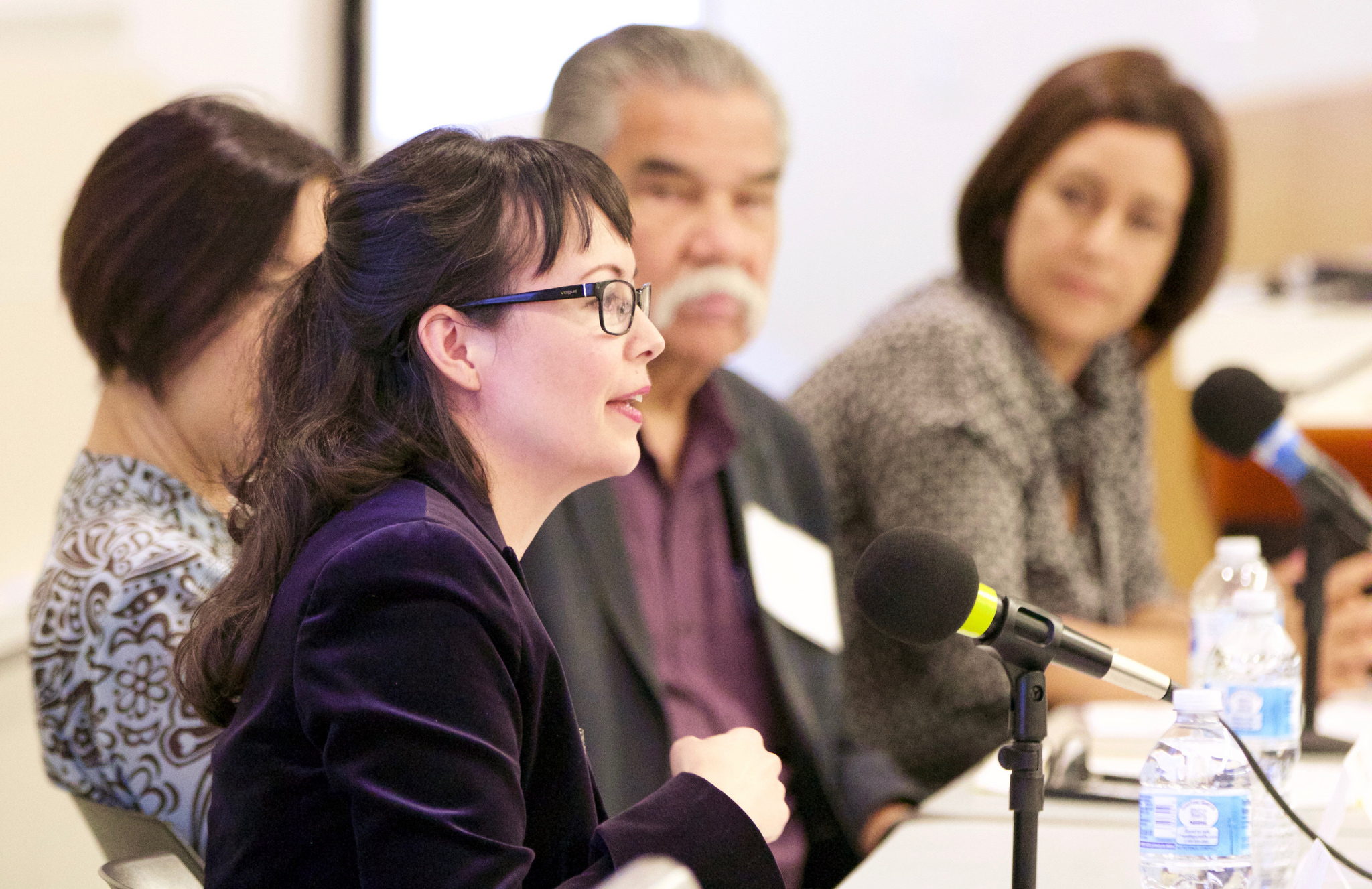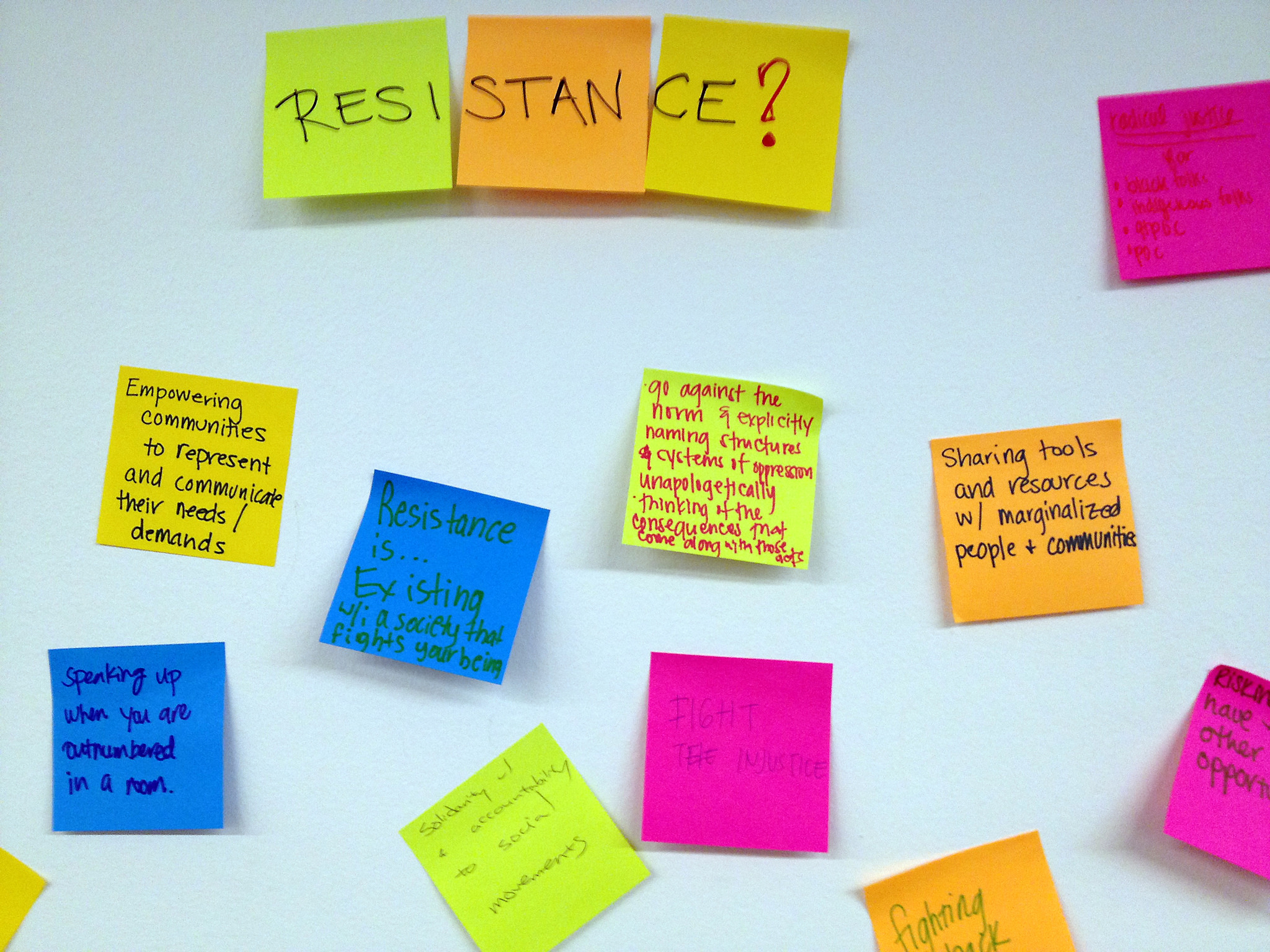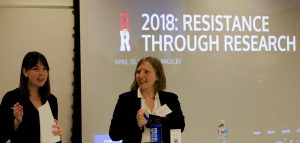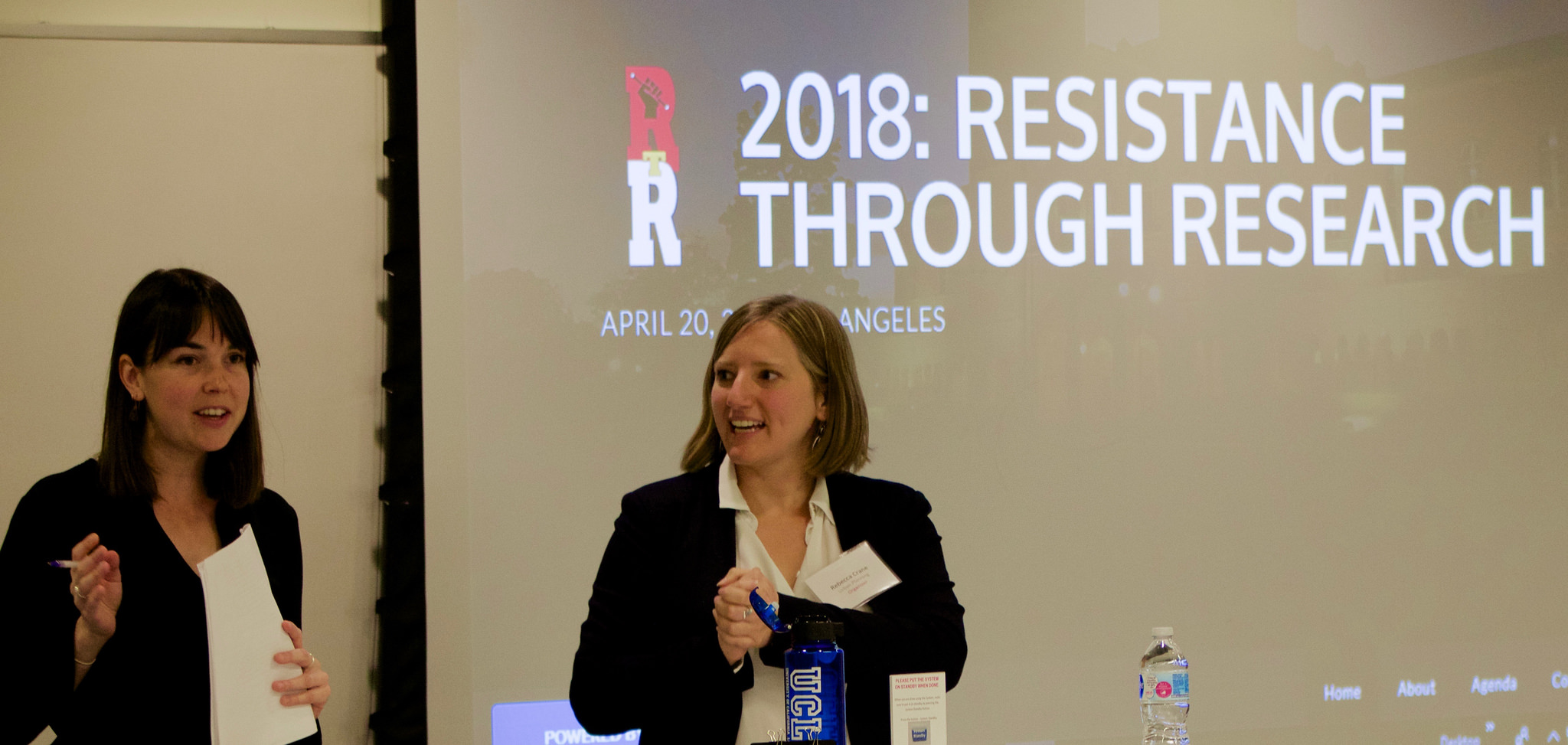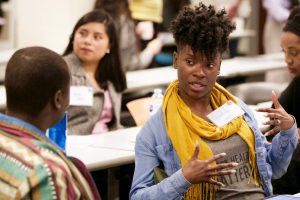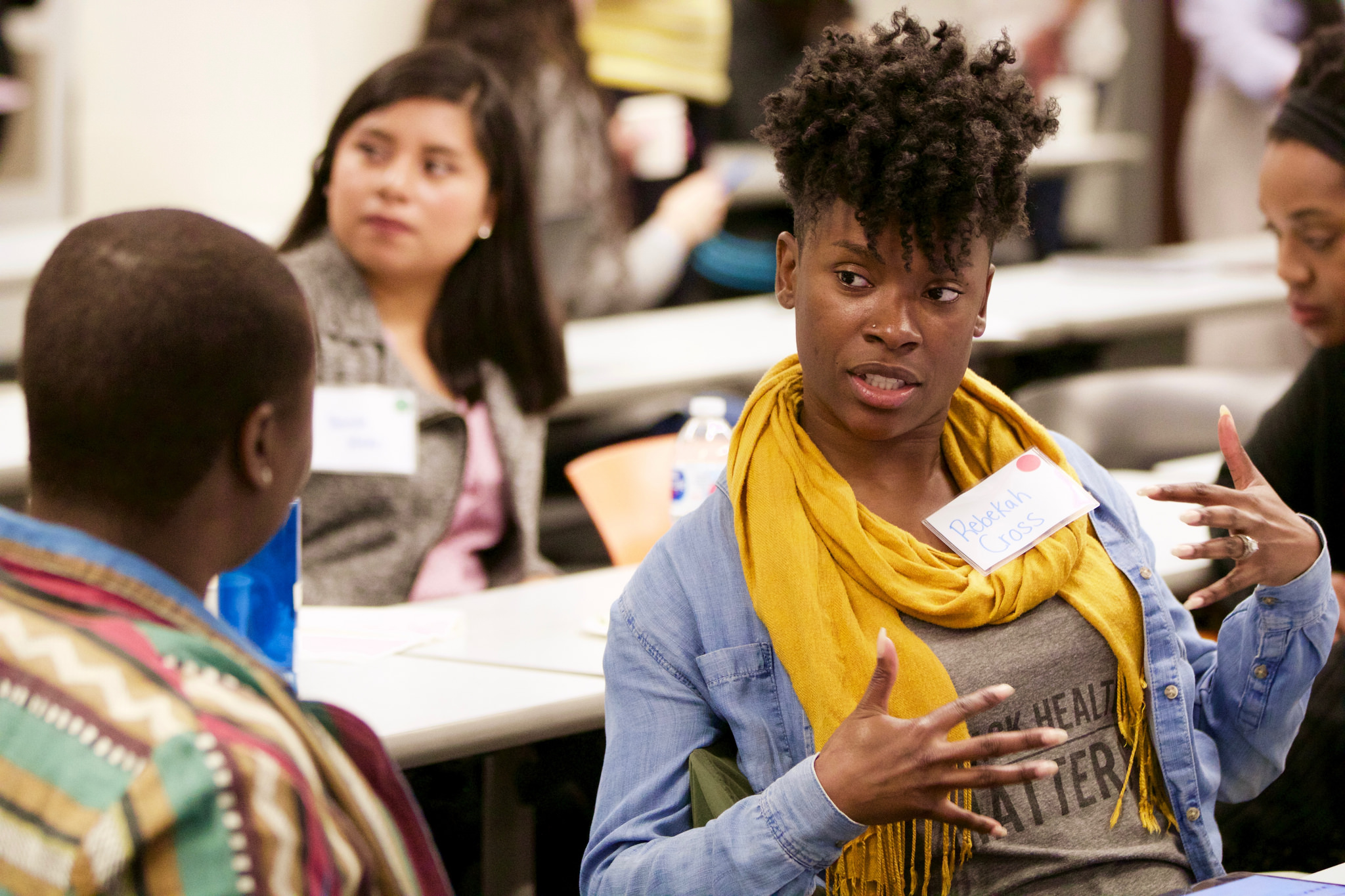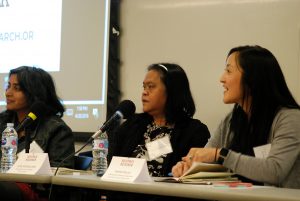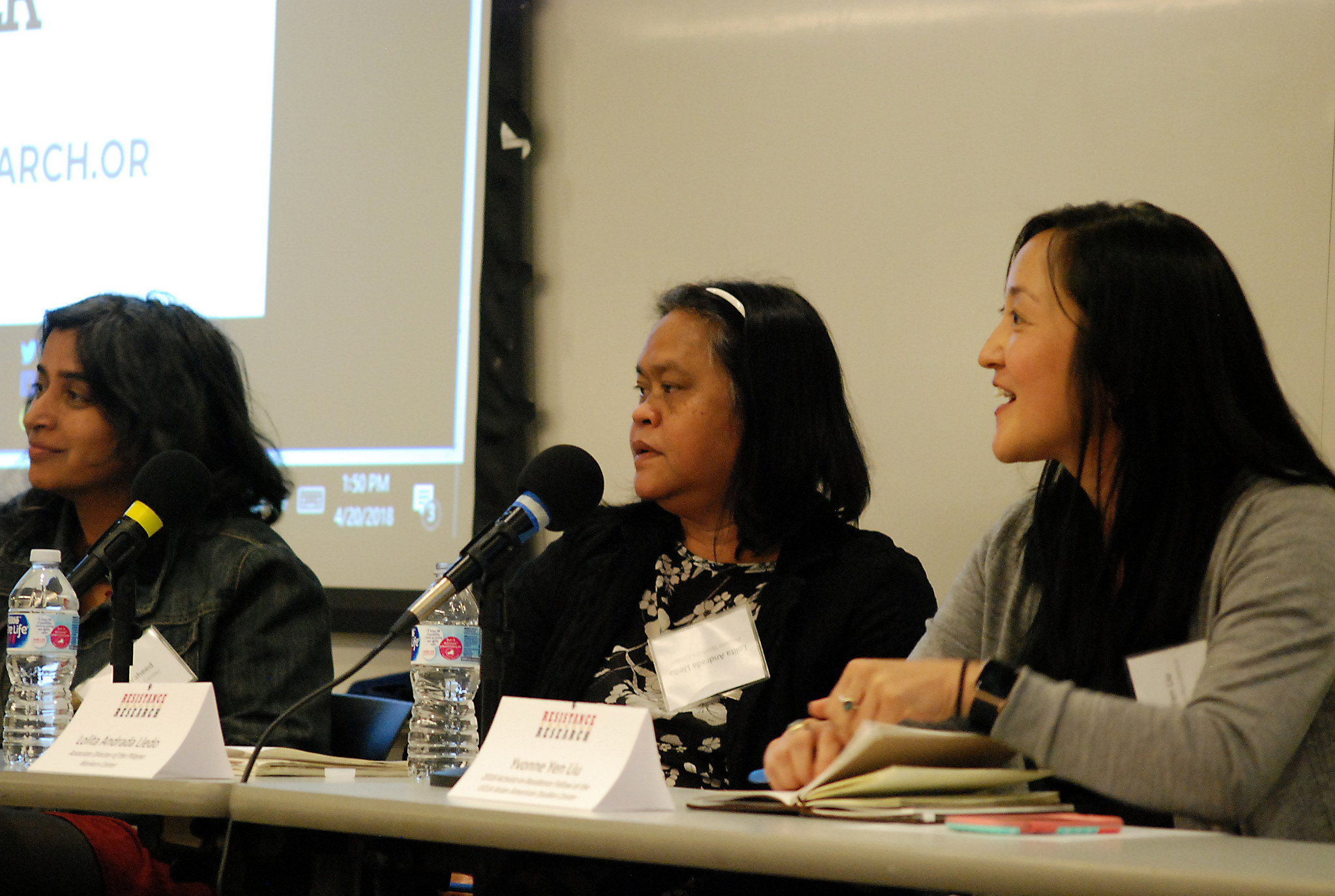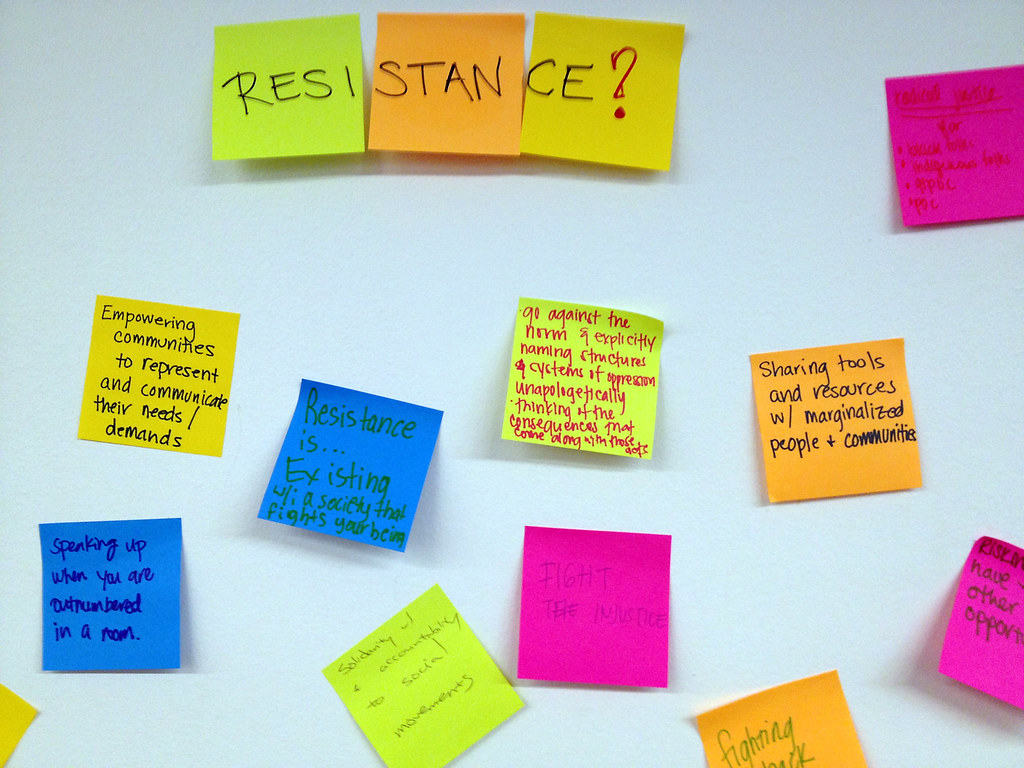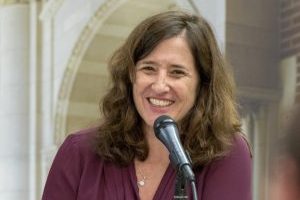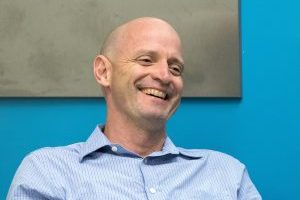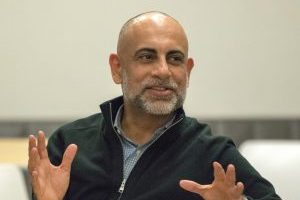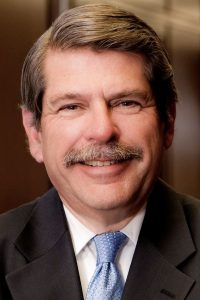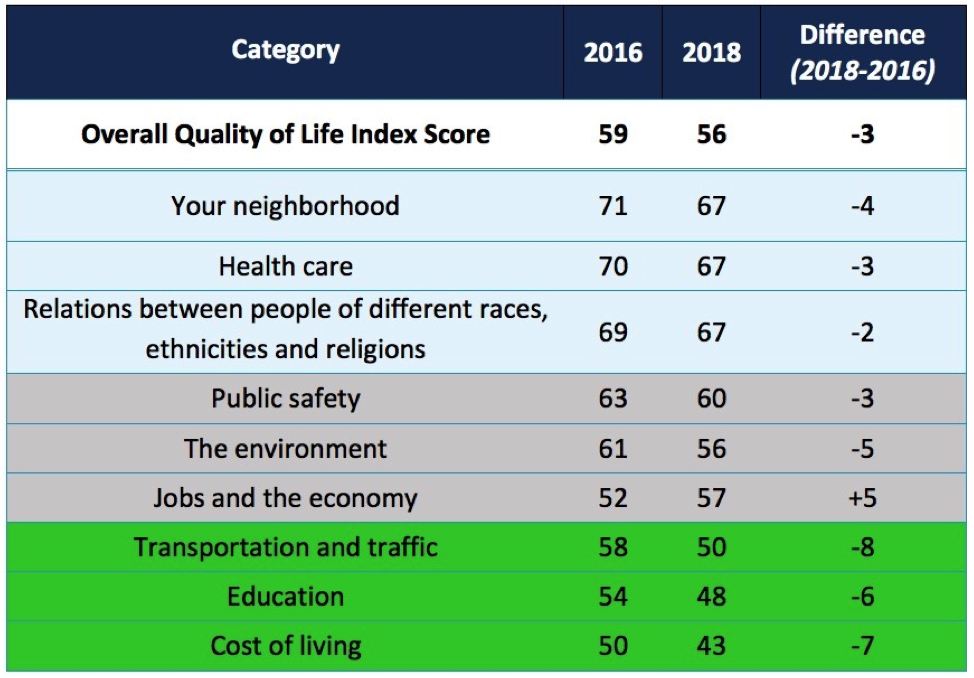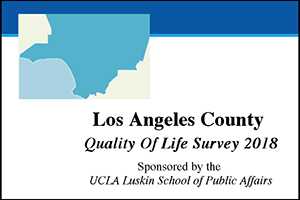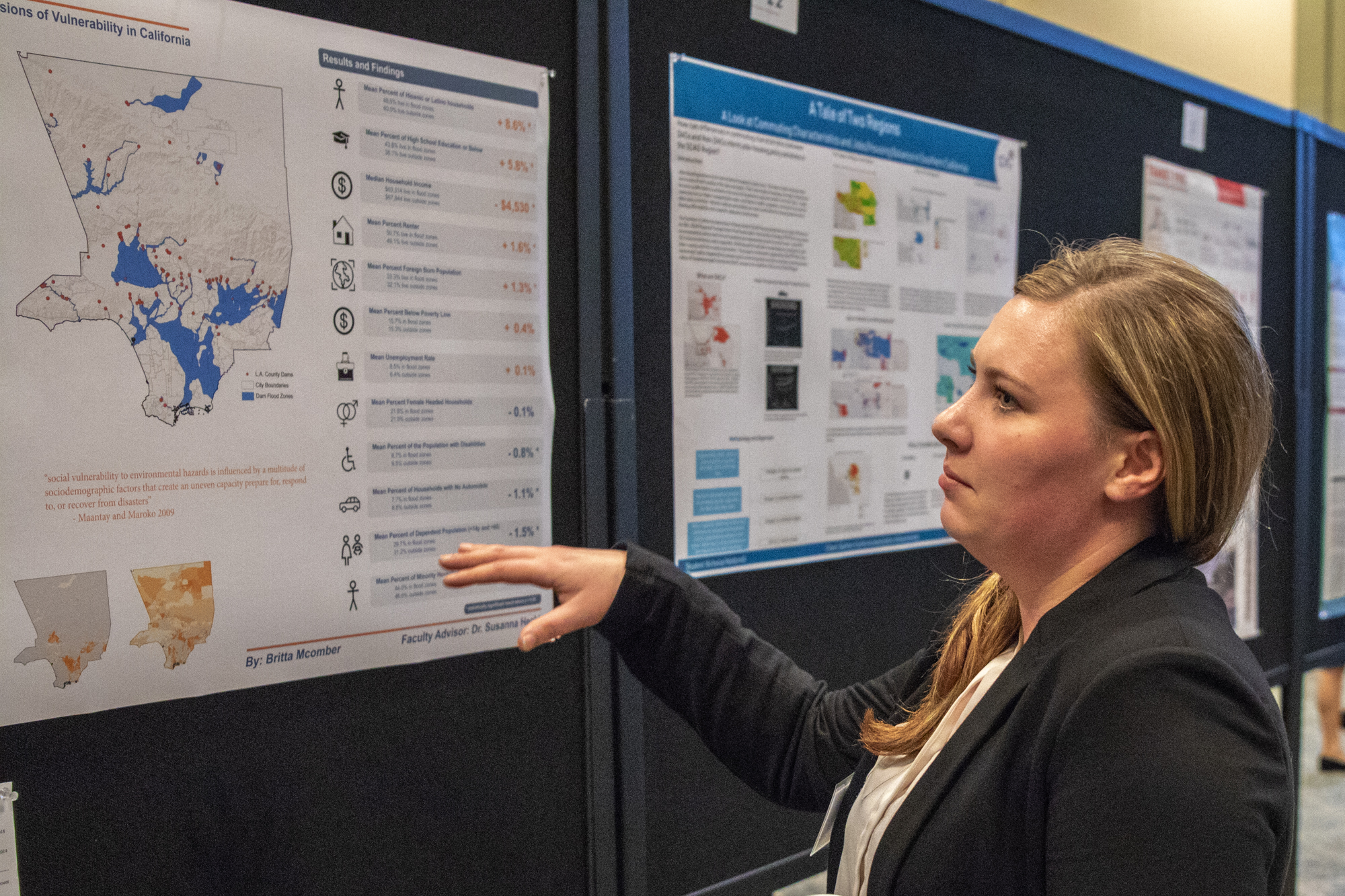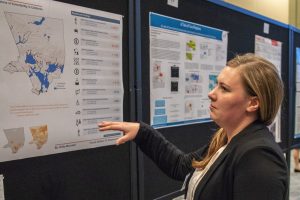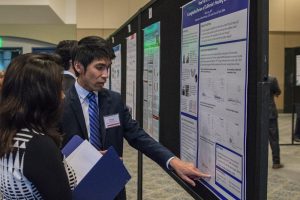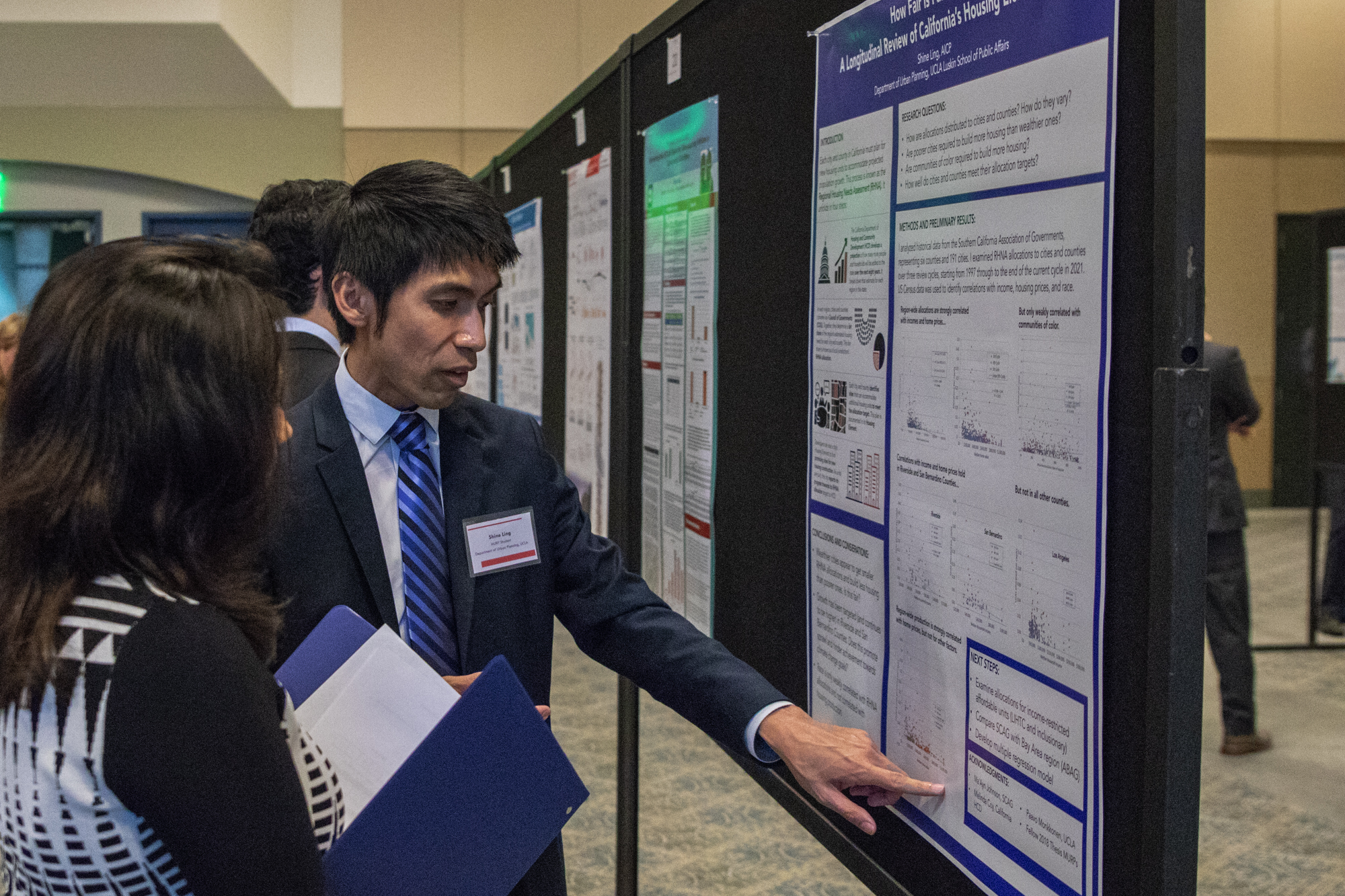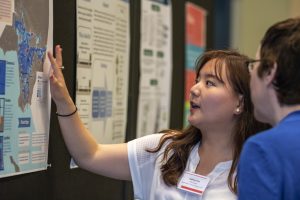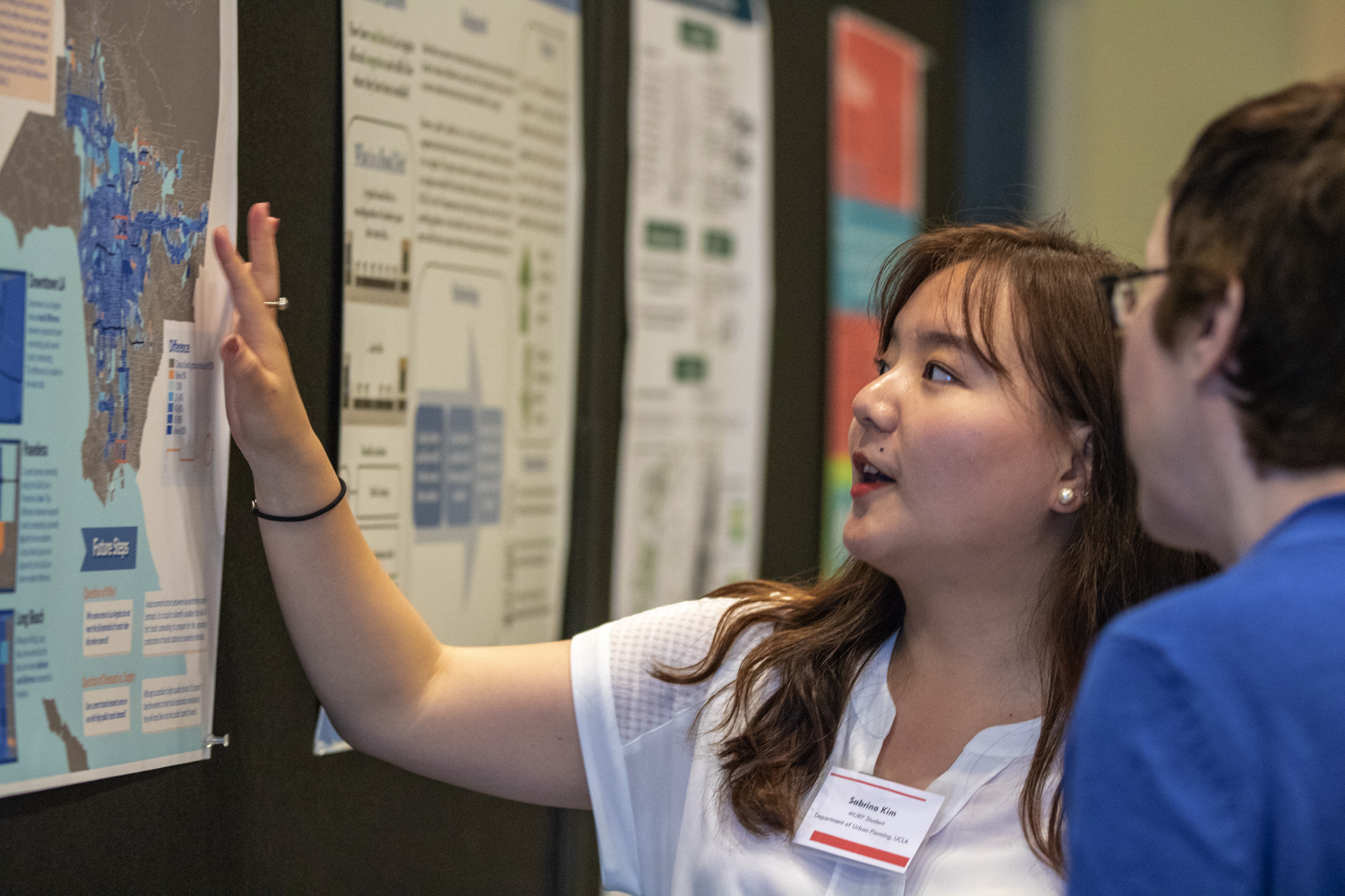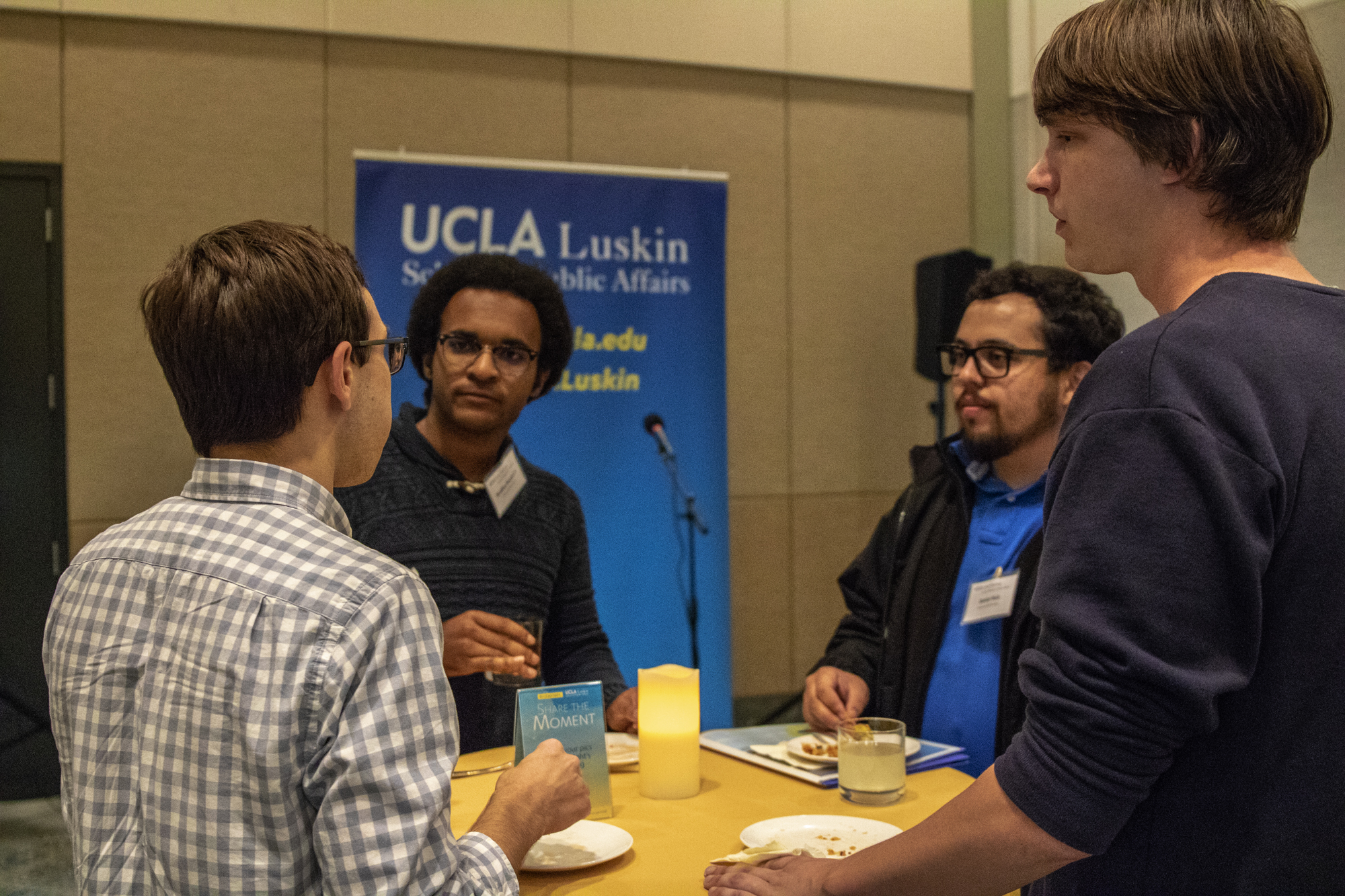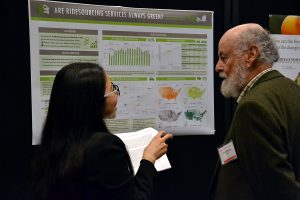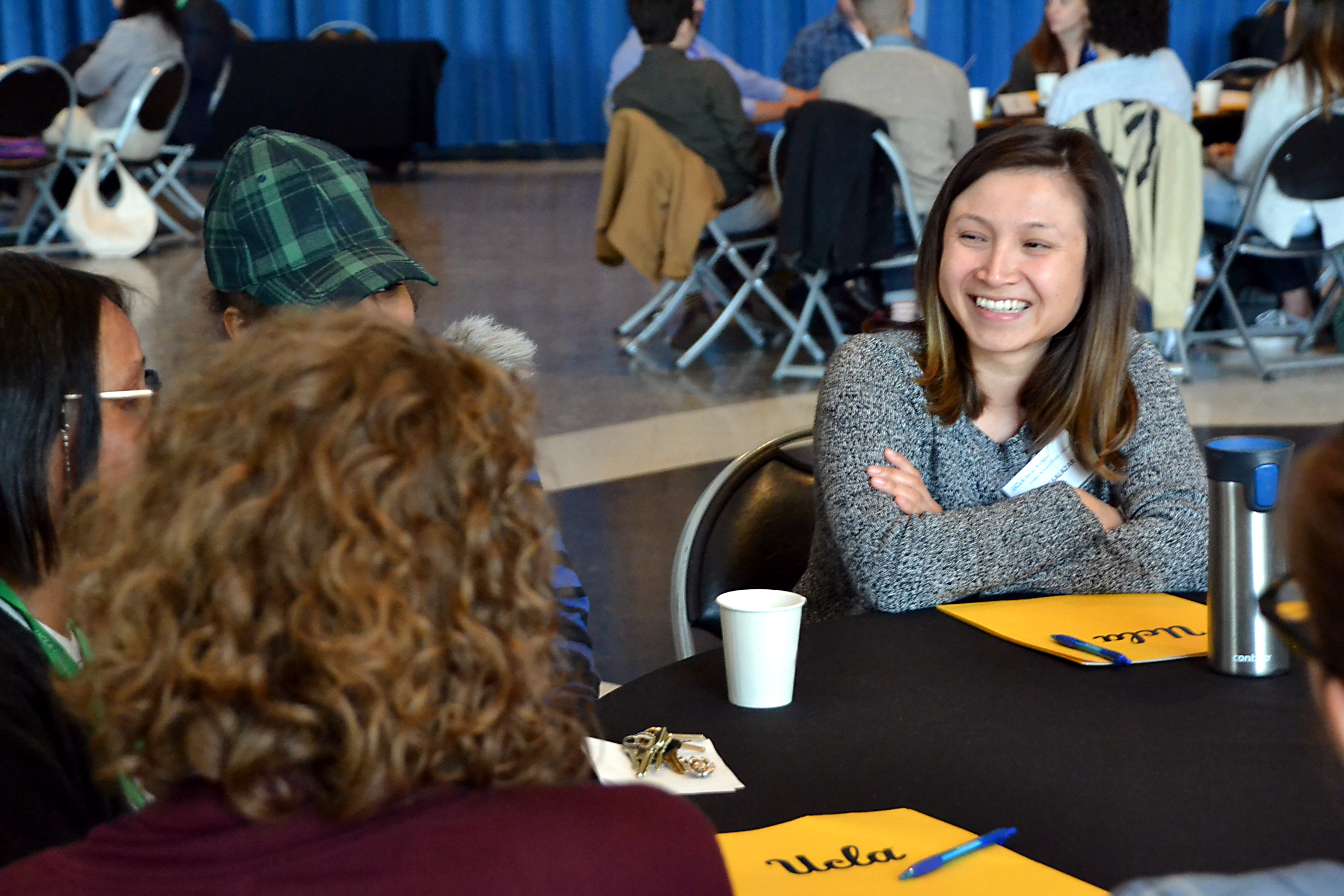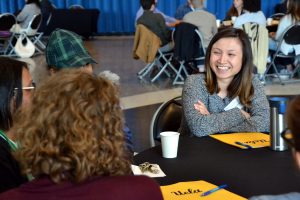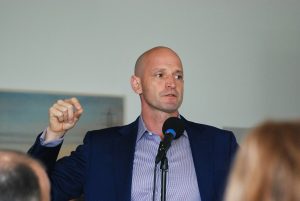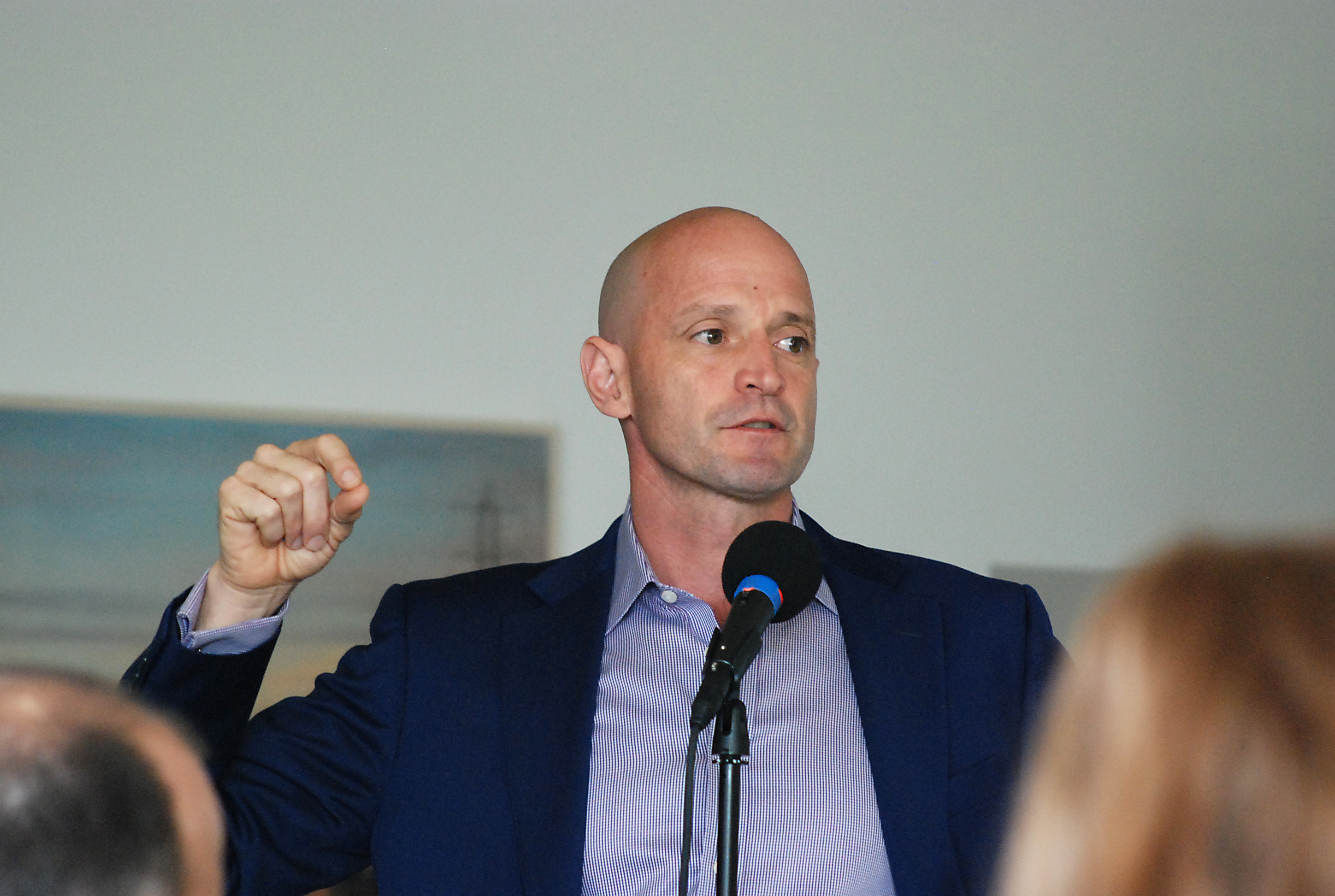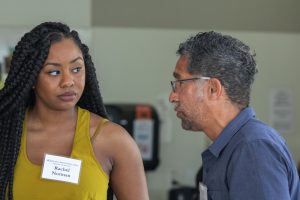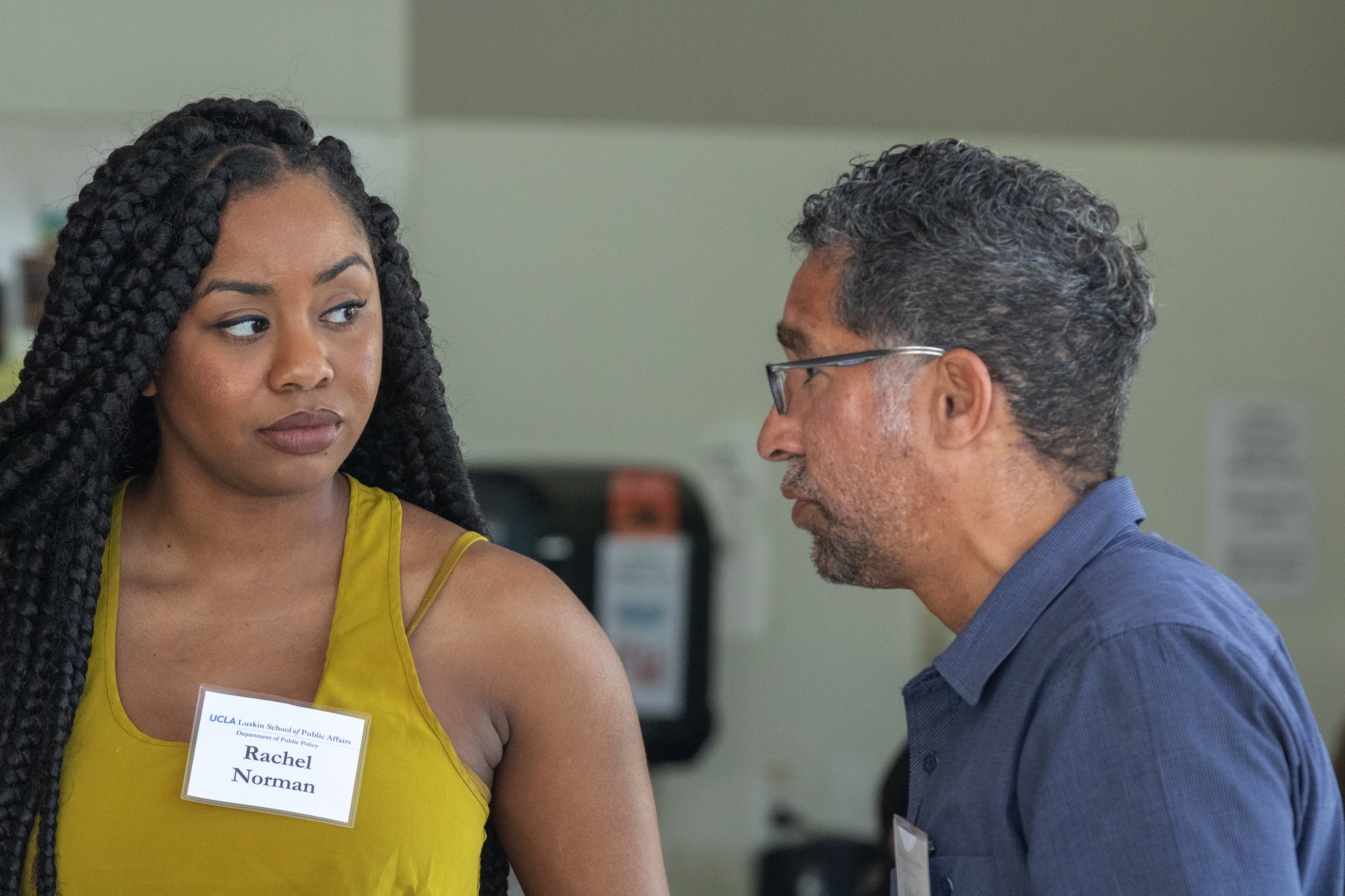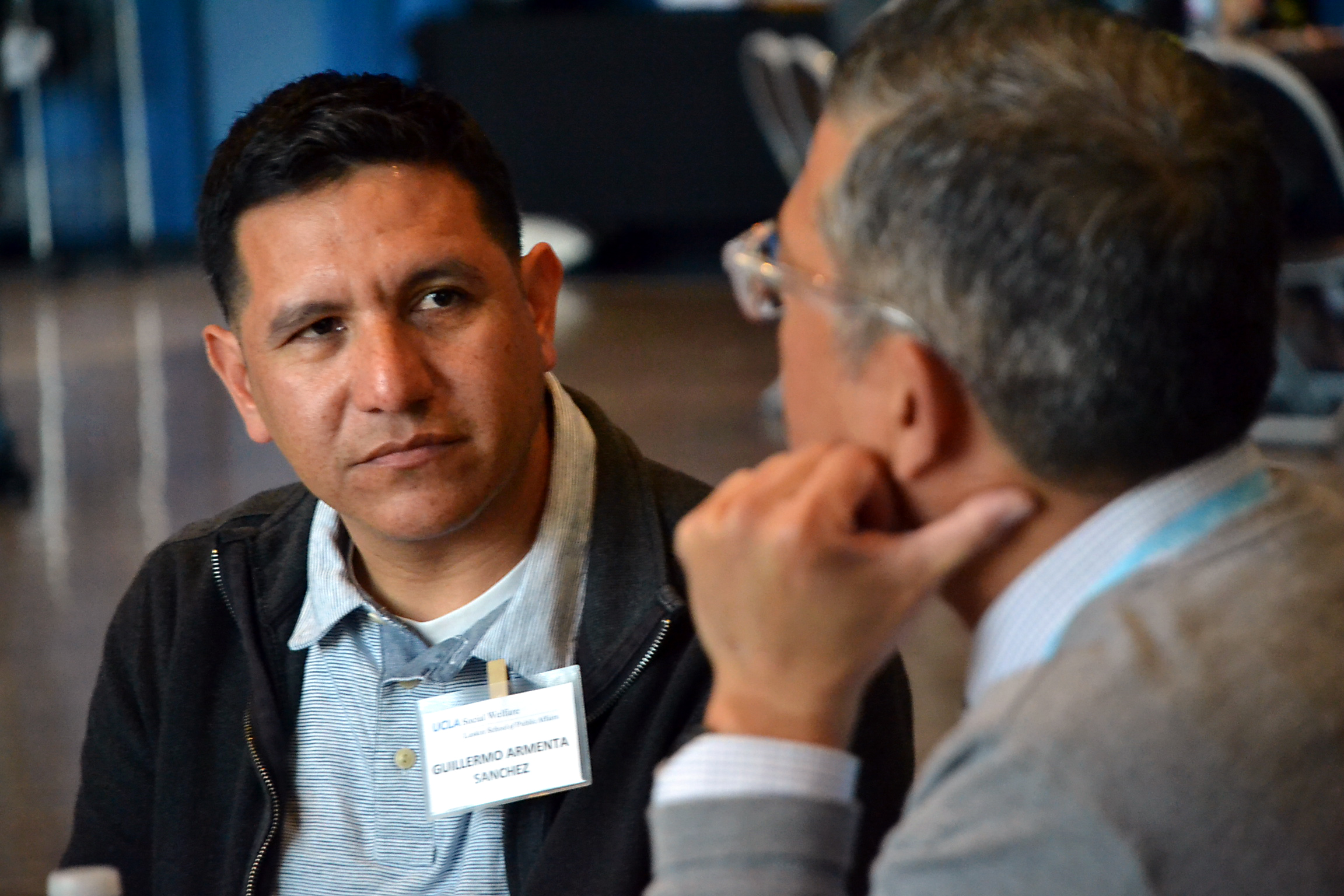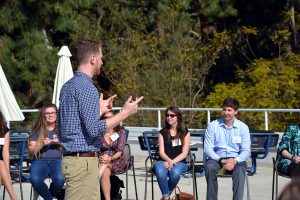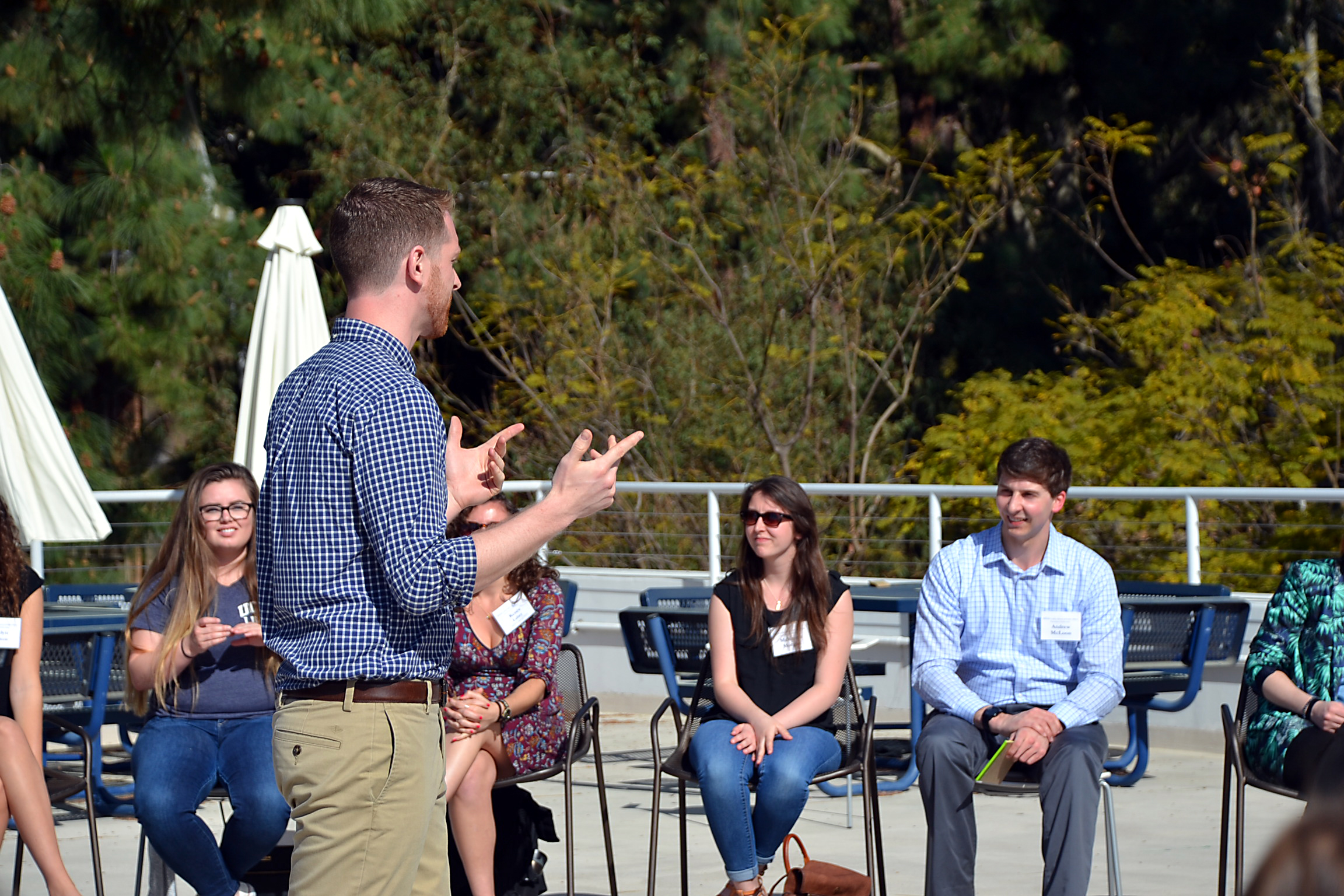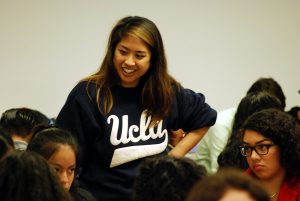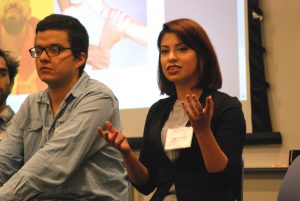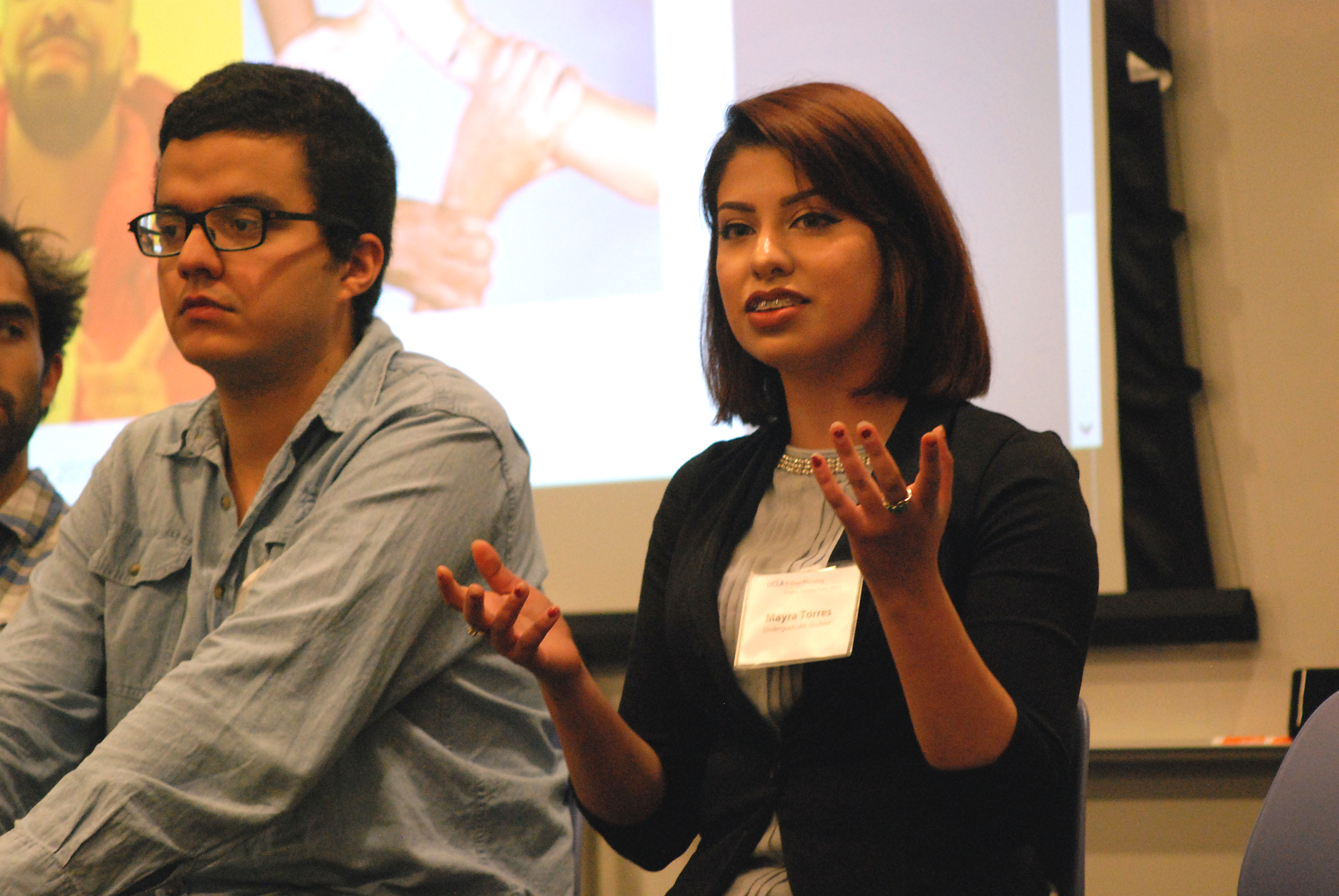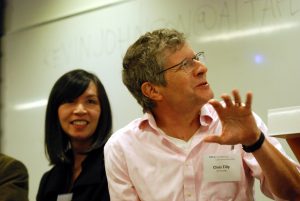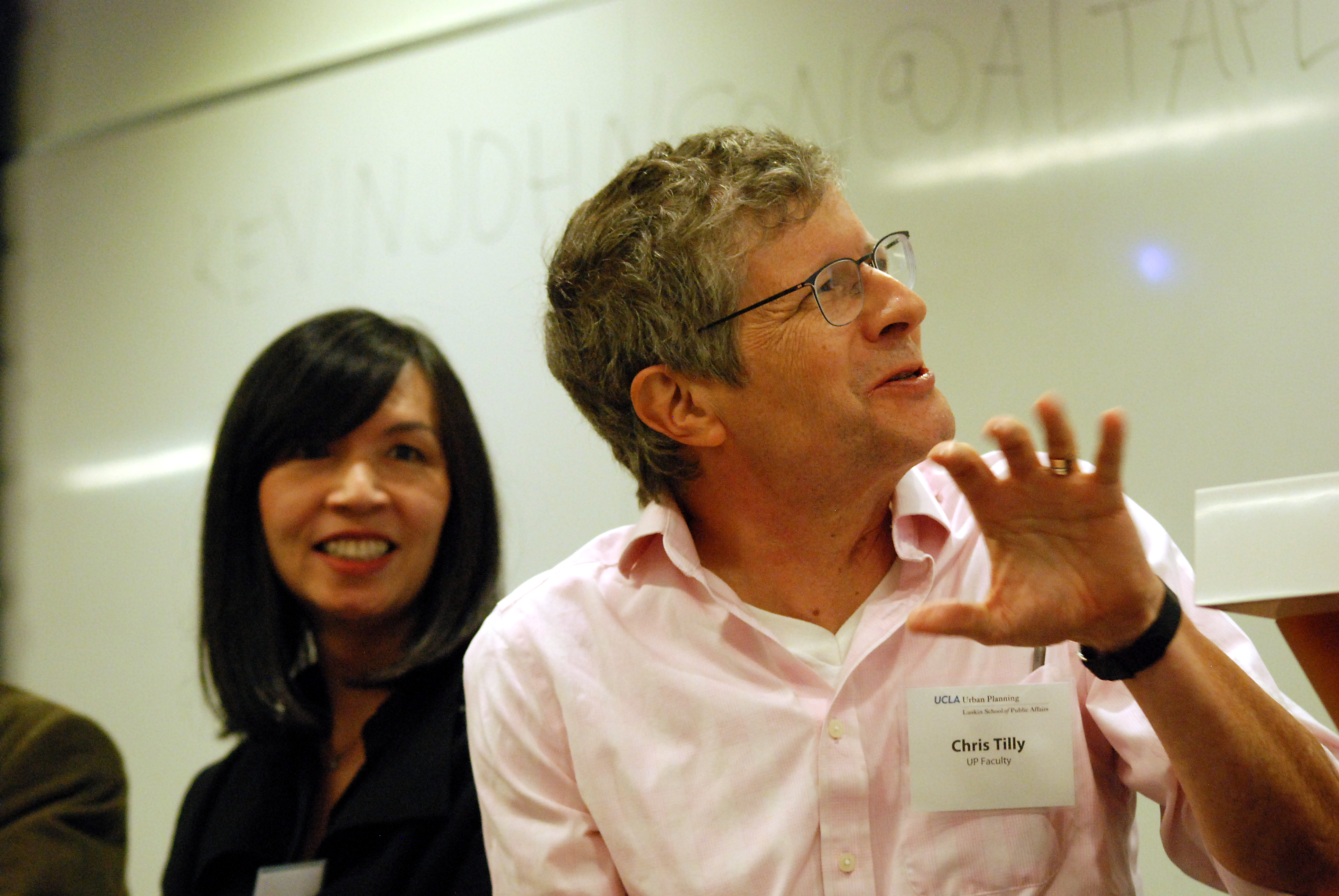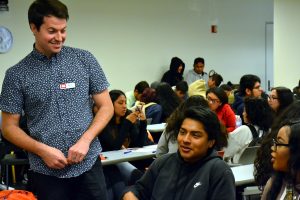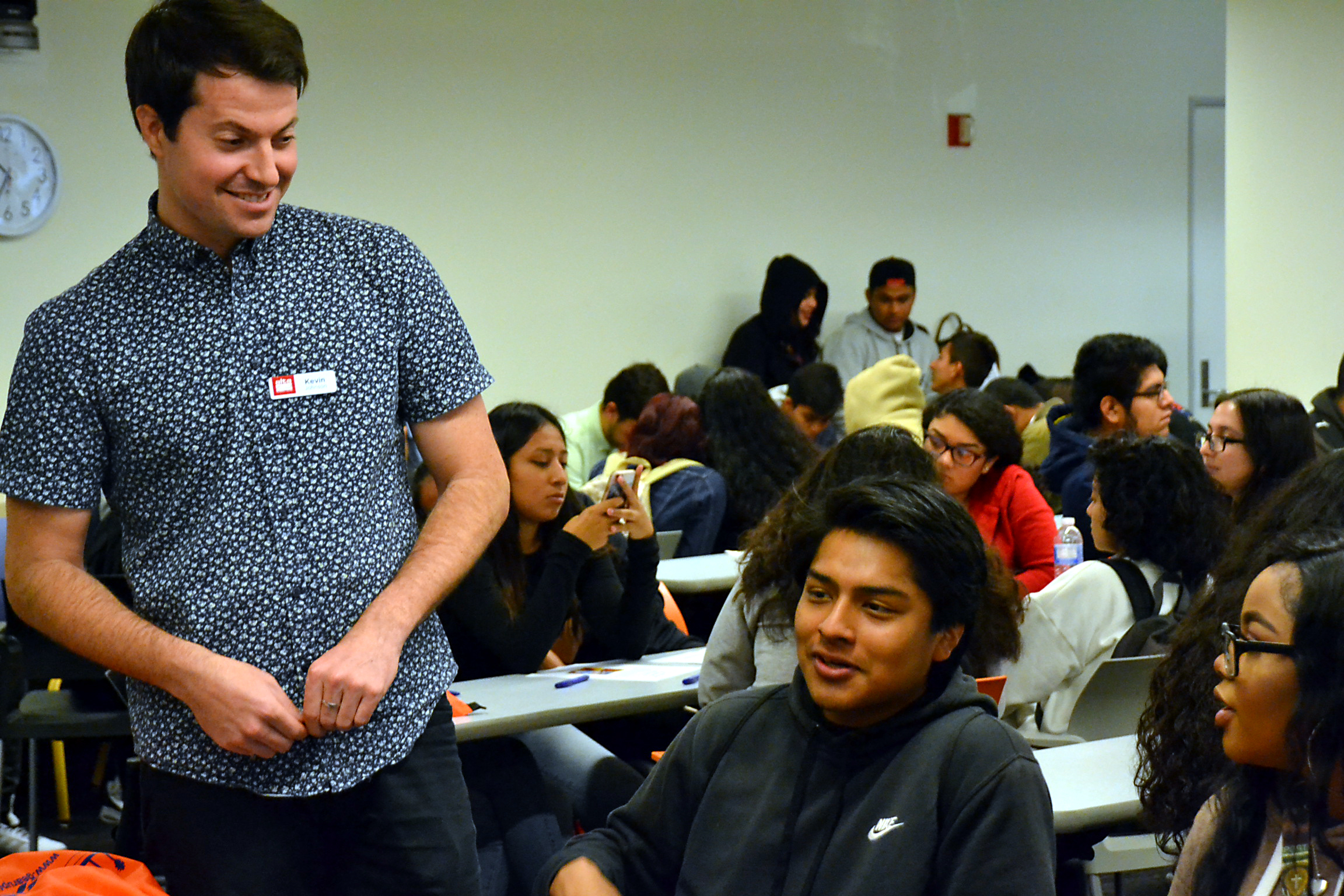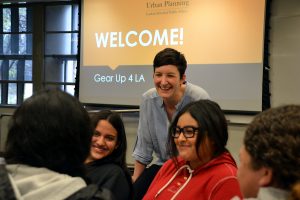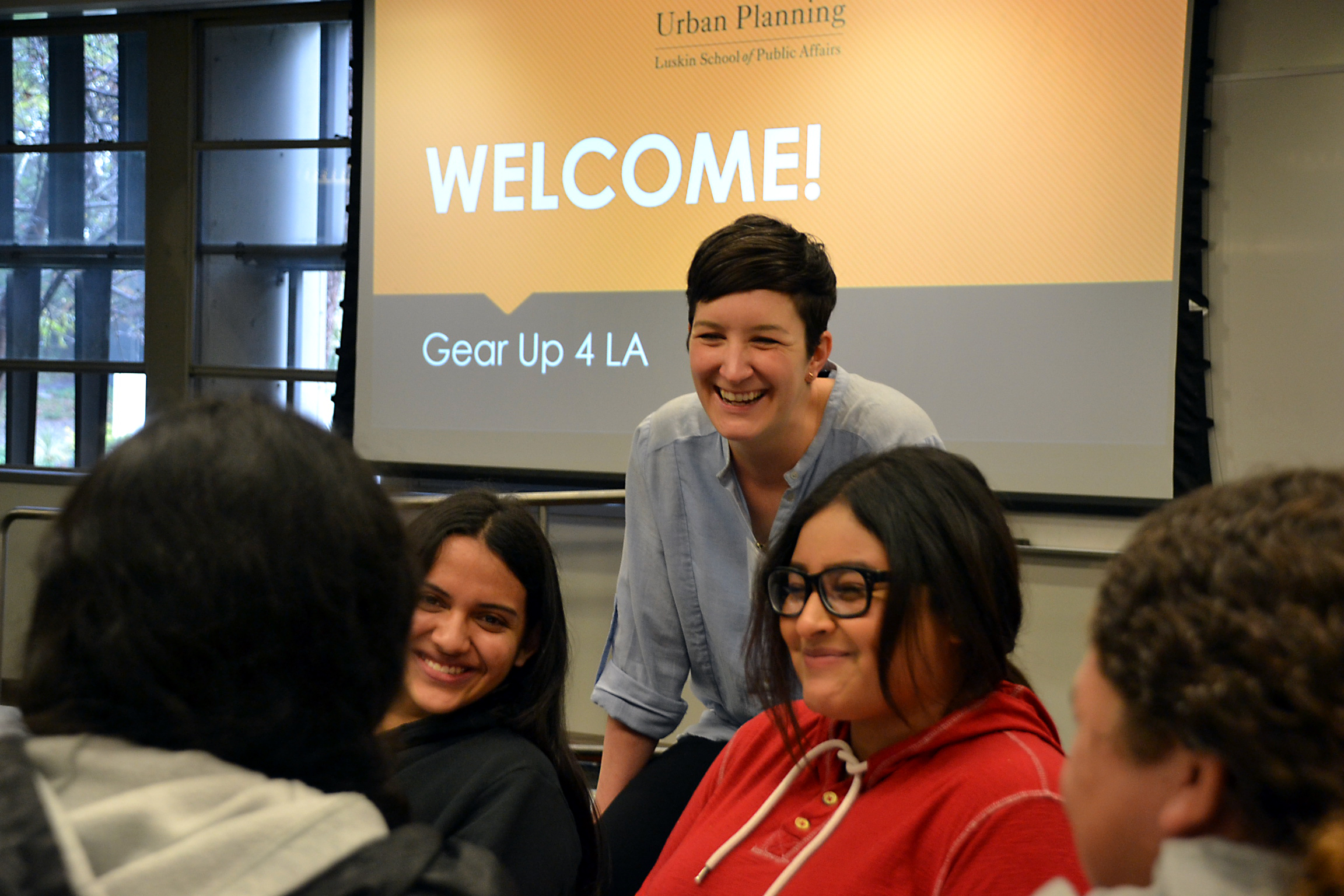Shackling the Leviathan Balancing the citizenry’s wants with the state’s needs is critical for a successful society, says 2018 Perloff lecturer Daron Acemoglu
By Zev Hurwitz
Governments with too much or too little power can be problematic. Just ask Daron Acemoglu, the 2018 Perloff lecturer at the UCLA Luskin School of Public Affairs.
In his remarks on May 8, 2018, at the Luskin School, Acemoglu reviewed some of his most recent work about institutions and societal outcomes. The event shared a title with his upcoming book, “The Narrow Corridor to Liberty: The Red Queen and the Struggle of State Against Society,” which he is co-authoring with James A. Robinson.
When it comes to issues of authority, Acemoglu said, striking the right balance is key. Too much or too little state power can lead to catastrophic violence and warfare.
“A lot of social and political theory is built around avoiding these sorts of scare scenarios,” he said.
At one extreme, a society where the government loses its means to govern can lead to chaos. Acemoglu shared a picture of the decimated city of Mosul, Iraq, following an ISIS takeover in 2014.
“This is an iconic case of what happens when a government’s law enforcement function collapses and anarchy prevails,” Acemoglu said.
On the flip side, governments with too much power can perpetrate the chaos directly. Such is the case with the state-led persecution of the Rohingya minority in Myanmar.
“What’s remarkable about this is that it wasn’t caused by the collapse of the state but was actually perpetrated by the state,” he said.
Another example of a government’s unchecked power, Acemoglu said, is China’s use of mass-pooled data to maintain social order.
Acemoglu’s upcoming book discusses the notion of “Shackling the Leviathan.” The Leviathan, as he describes it, is a large-scale controlling state entity, either a governmental institution or a ruler. “Shackling” the Leviathan is the process by which the state’s non-elite public obtains control of the Leviathan’s operations by instituting checks and balances. Acemoglu cites the United States and United Kingdom as nations that have successfully tamed the Leviathan.
“Once you create an environment in a society where its citizens shackle the Leviathan, not only does this pave the way for the emergence of liberty, but it fundamentally changes the nature of politics,” he said.
Even in modern times, some societies have managed to exist largely in peace with either extreme or absent governing structures. The Tiv in Nigeria operate without any centralized government, Acemoglu noted.
For states that successfully shackle the Leviathan, Acemoglu says, the challenge becomes maintaining the status quo. The “Red Queen” refers to a line in Lewis Carroll’s “Alice in Wonderland,” in which the monarchic leader notes, “It takes all the running you can do to stay in the same place.” Maintaining such a balance between state and citizen control is often a work in progress, and a painful one at that.
“You have to keep on running,” he said.
Acemoglu is an economics professor at MIT focusing on political economy. His prior work includes research on the role of institutions in economic outcomes for various countries.
The Harvey S. Perloff Lecture Series is named for the founding dean of the UCLA Graduate School of Architecture and Urban Planning, which has since evolved, in part, into the Luskin School. The event was sponsored by UCLA Luskin Urban Planning and Public Policy and by Global Public Affairs.
Urban Planning Professor Michael Storper introduced the speaker by noting similarities between Acemoglu’s lecture and Perloff’s own work in regional economics.
“There’s a kind of interesting continuity over time with the themes of this lecture,” Storper said. “Institutions are the foundations of economic and social work.”
Nearly 75 students and faculty members were in attendance at the evening lecture, which was followed by a reception.
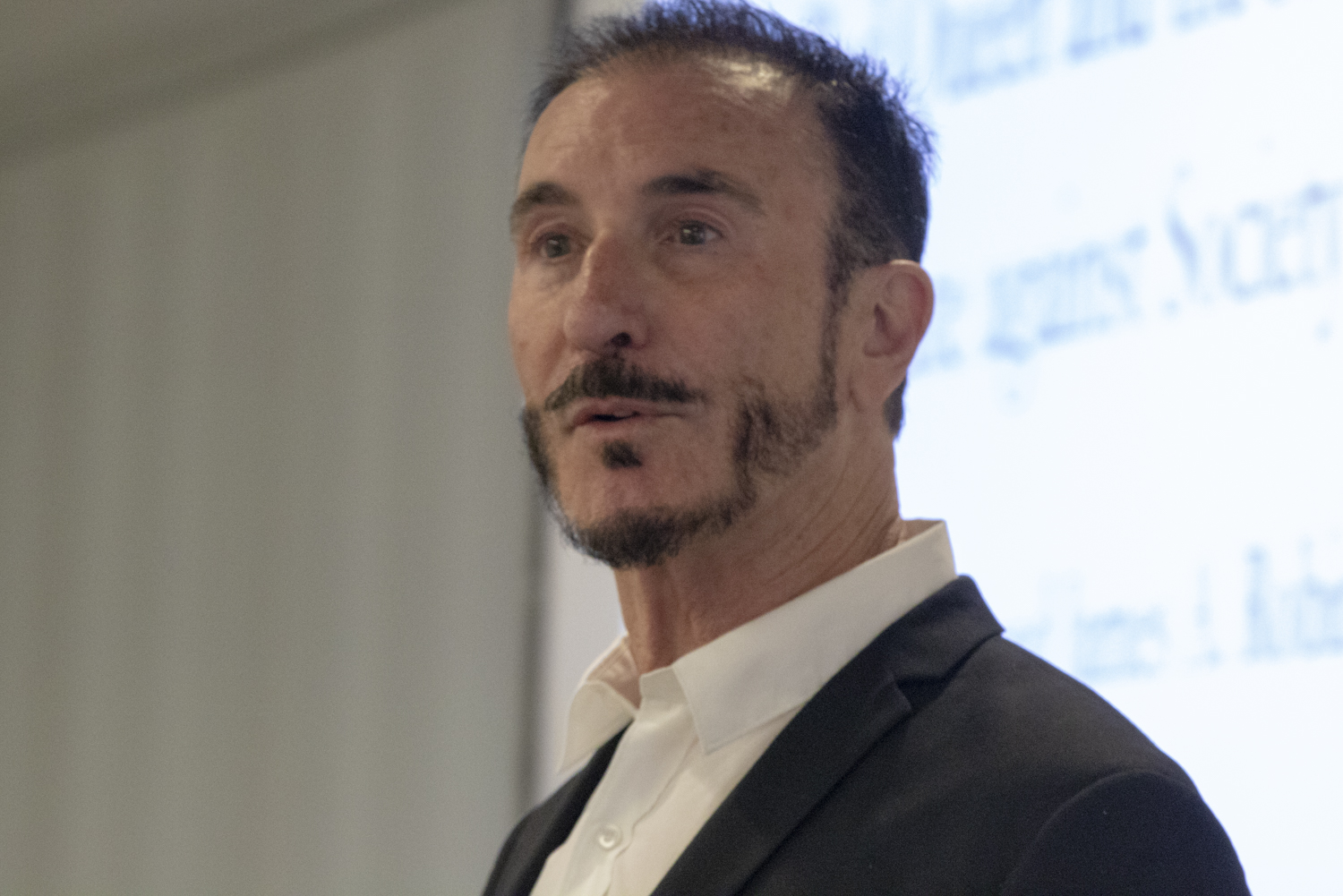
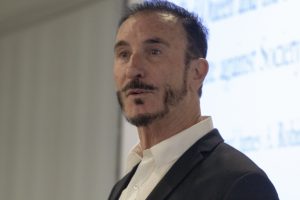
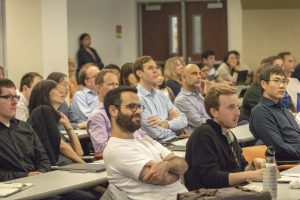
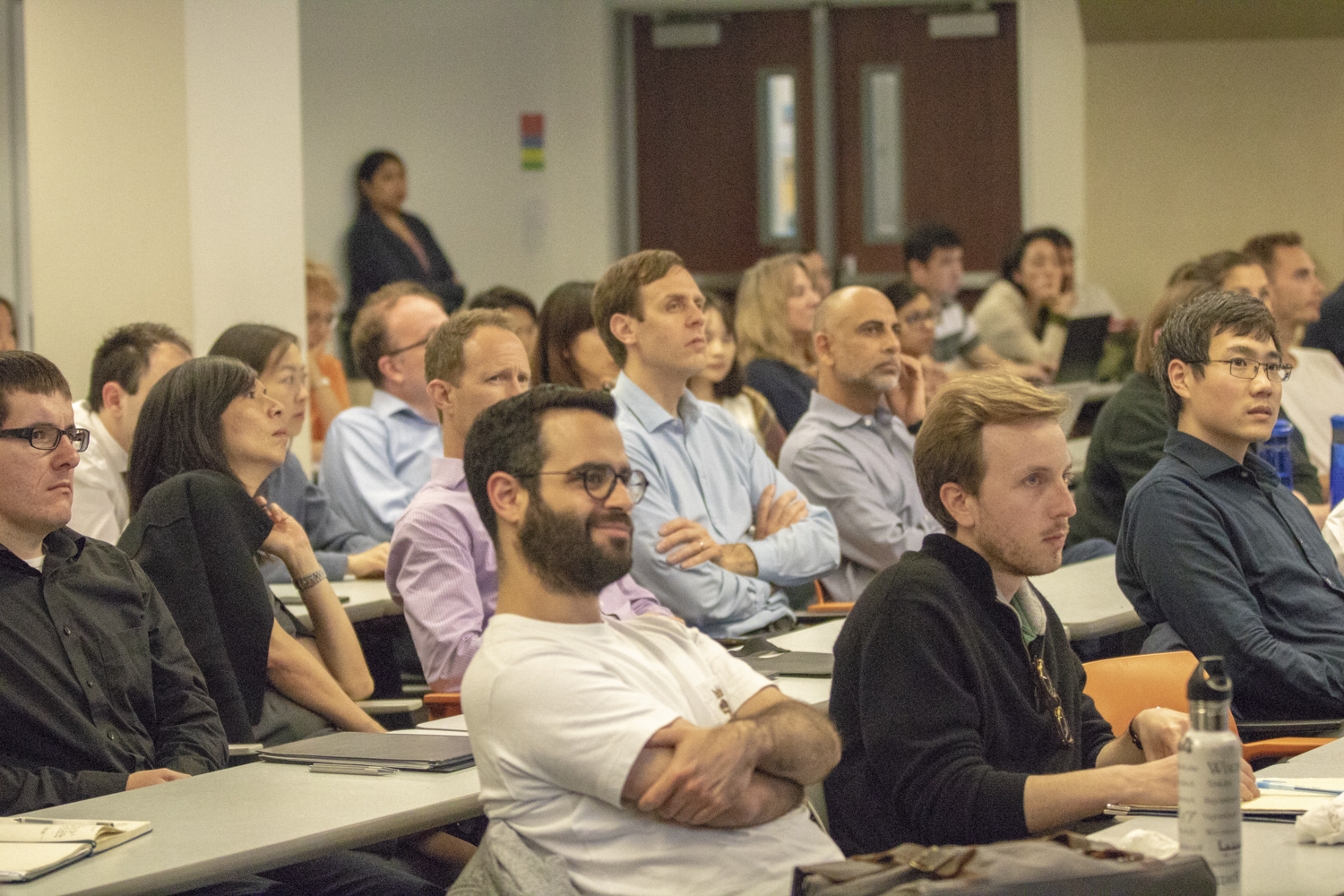
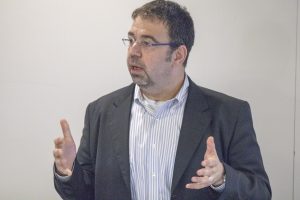
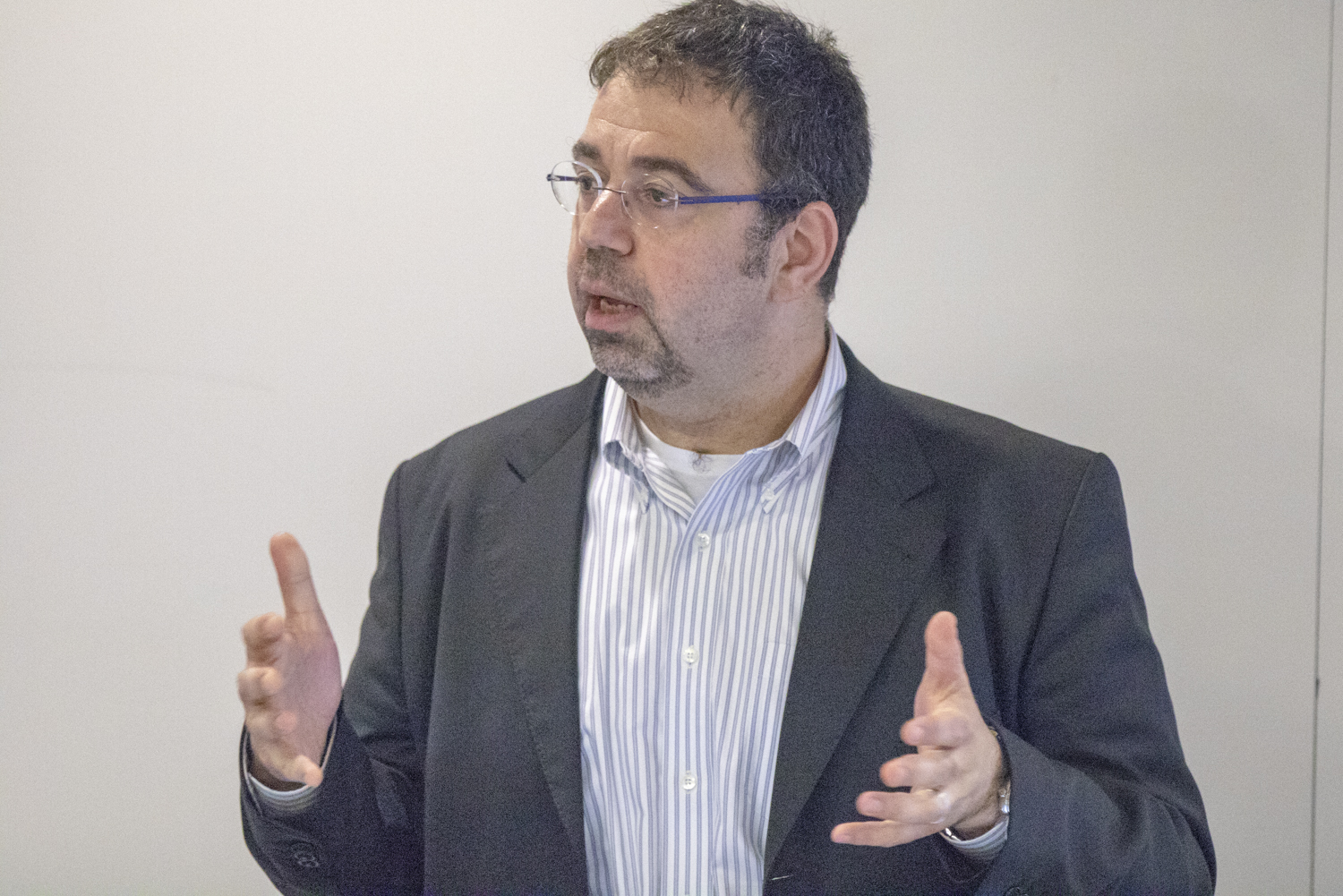
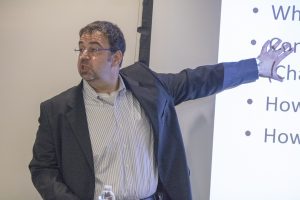
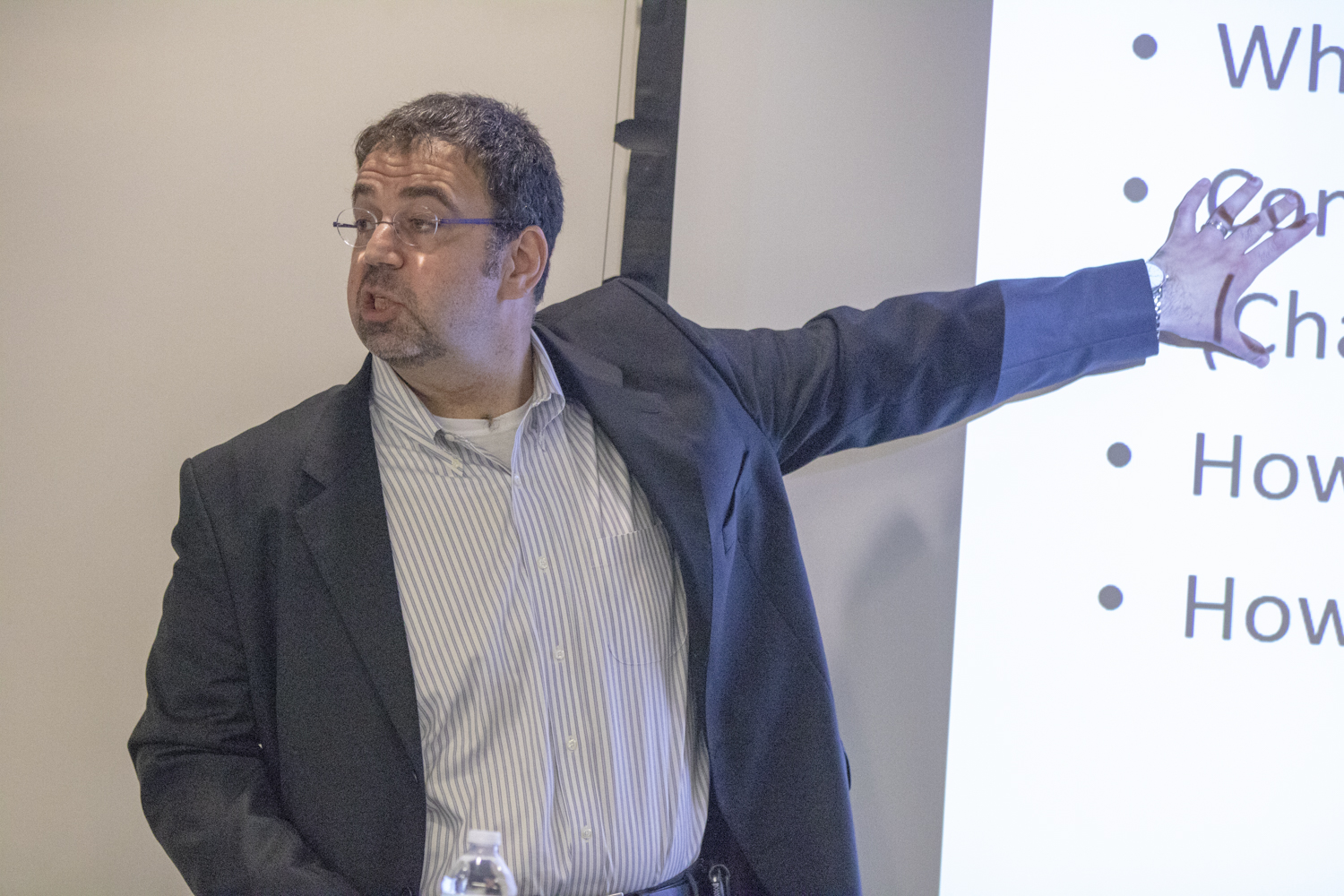
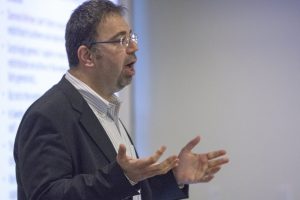
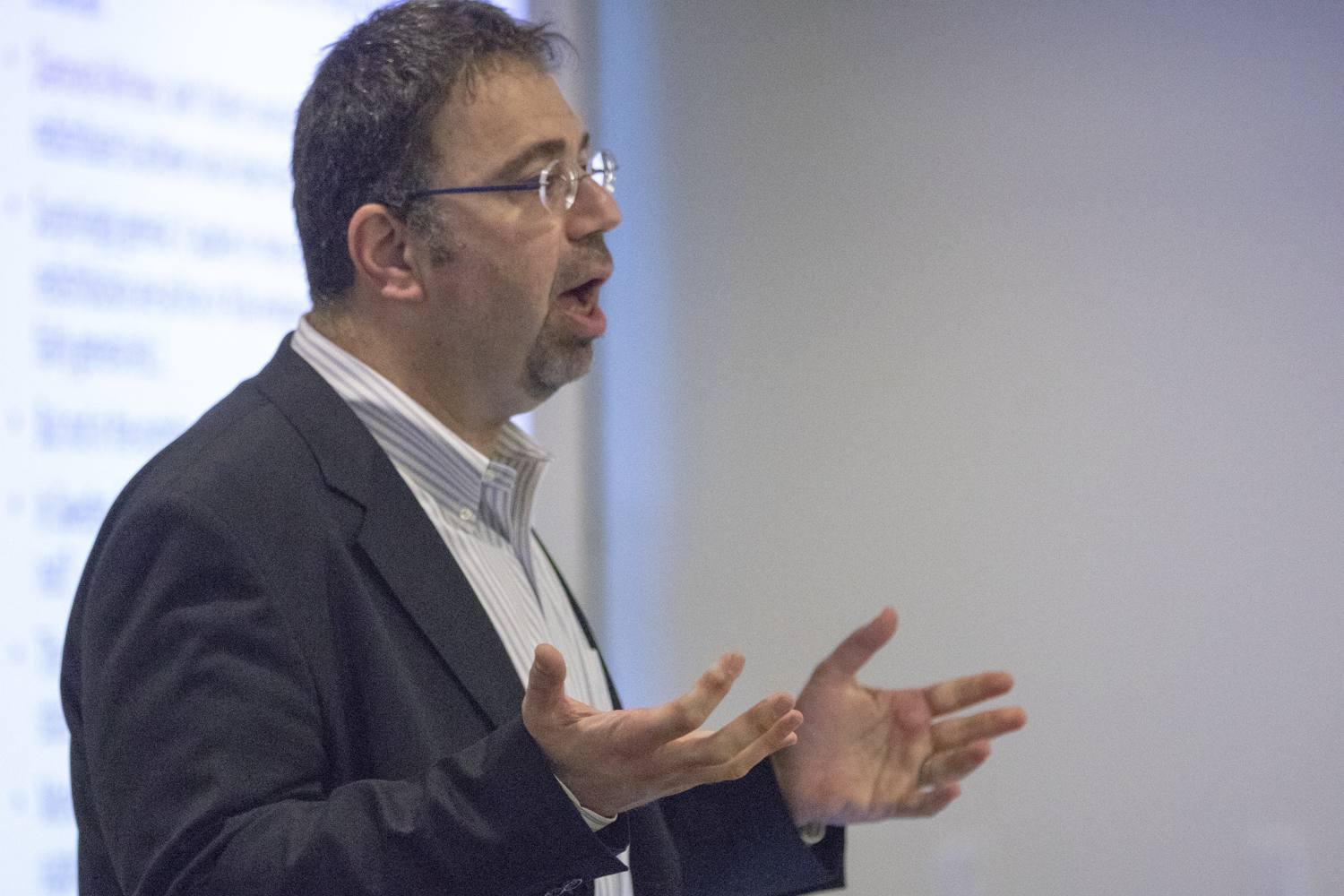

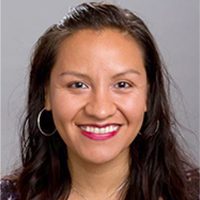 Amada Armenta: She is returning to UCLA where she completed her PhD in sociology, and will join Urban Planning in the fall. Armenta comes to UCLA from the University of Pennsylvania where she is an Assistant Professor of Sociology. Her work looks at immigration enforcement and its impact on the lives and communities affected. She is particularly interested in the intervention of the criminal justice system in immigration enforcement. She has been published in Social Problems and the Annual Review of Sociology, in addition to her University of California Press book, “Protect, Serve, and Deport: The Rise of Policing as Immigration Enforcement.”
Amada Armenta: She is returning to UCLA where she completed her PhD in sociology, and will join Urban Planning in the fall. Armenta comes to UCLA from the University of Pennsylvania where she is an Assistant Professor of Sociology. Her work looks at immigration enforcement and its impact on the lives and communities affected. She is particularly interested in the intervention of the criminal justice system in immigration enforcement. She has been published in Social Problems and the Annual Review of Sociology, in addition to her University of California Press book, “Protect, Serve, and Deport: The Rise of Policing as Immigration Enforcement.” Natalie Bau: She is an international economist currently at the University of Toronto and will be joining Public Policy. Bau’s work examines several different aspects of the economics of education and educational policies and their downstream implications, including the effects on marriage patterns, teacher pay, student achievement and motivation, and others. She has projects in the works including “The Misallocation of Pay and Productivity in the Public Sector: Evidence from the Labor Market for Teachers” as well as “Labour Coercion and Economic Growth: Evidence from the Harrying of the North.”
Natalie Bau: She is an international economist currently at the University of Toronto and will be joining Public Policy. Bau’s work examines several different aspects of the economics of education and educational policies and their downstream implications, including the effects on marriage patterns, teacher pay, student achievement and motivation, and others. She has projects in the works including “The Misallocation of Pay and Productivity in the Public Sector: Evidence from the Labor Market for Teachers” as well as “Labour Coercion and Economic Growth: Evidence from the Harrying of the North.”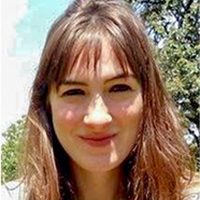
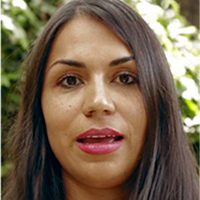 Amy Ritterbusch: She will be joining Social Welfare. Ritterbusch is a human and urban geographer and currently an associate professor of government at the Universidad de los Andes in Bogotá, Colombia. Her work is focused on urban social justice movements, marginalized youth, substance abuse, prostitution and other downstream effects of child poverty. She also brings extensive expertise in field work, ethnographic methods and Latin American populations across the hemisphere. She has written several journal articles, which have been featured in Child, Abuse & Neglect, Global Public Health, Annals of the American Association of Geographers and other peer-reviewed journals.
Amy Ritterbusch: She will be joining Social Welfare. Ritterbusch is a human and urban geographer and currently an associate professor of government at the Universidad de los Andes in Bogotá, Colombia. Her work is focused on urban social justice movements, marginalized youth, substance abuse, prostitution and other downstream effects of child poverty. She also brings extensive expertise in field work, ethnographic methods and Latin American populations across the hemisphere. She has written several journal articles, which have been featured in Child, Abuse & Neglect, Global Public Health, Annals of the American Association of Geographers and other peer-reviewed journals.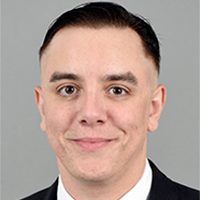 Carlos Santos: Currently an assistant professor in counseling psychology at ASU, Santos is coming to UCLA Luskin Social Welfare. His work is principally on gender and ethnic identities, stereotypes, and their impacts on social adjustment, educational performance and outcomes among adolescents in communities of color. He received his PhD from NYU and his work has been funded by NSF and NIH. In addition to his monograph “Studying Ethnic Identity” for the American Psychological Association, his work has been published in many outlets, including the Journal of Youth and Adolescence and the Journal of Counseling Psychology.
Carlos Santos: Currently an assistant professor in counseling psychology at ASU, Santos is coming to UCLA Luskin Social Welfare. His work is principally on gender and ethnic identities, stereotypes, and their impacts on social adjustment, educational performance and outcomes among adolescents in communities of color. He received his PhD from NYU and his work has been funded by NSF and NIH. In addition to his monograph “Studying Ethnic Identity” for the American Psychological Association, his work has been published in many outlets, including the Journal of Youth and Adolescence and the Journal of Counseling Psychology.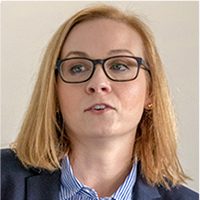 V. Kelly Turner: Turner is currently an assistant professor of geography at Kent State and her focus is human-environmental interaction and urban management. She will join Luskin Urban Planning in the fall. Her focus has been on how institutional arrangements and good metrics for resource consumption can help us build toward a more sustainable ecosystem, and she has applied this work to water resources, sustainable urbanism, and green infrastructure. She is the author of more than a dozen journal articles in publications such as Applied Geography, Ecology and Society, Urban Geography, and others.
V. Kelly Turner: Turner is currently an assistant professor of geography at Kent State and her focus is human-environmental interaction and urban management. She will join Luskin Urban Planning in the fall. Her focus has been on how institutional arrangements and good metrics for resource consumption can help us build toward a more sustainable ecosystem, and she has applied this work to water resources, sustainable urbanism, and green infrastructure. She is the author of more than a dozen journal articles in publications such as Applied Geography, Ecology and Society, Urban Geography, and others.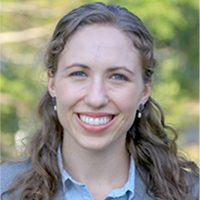 Emily Weisburst: She is finishing a PhD in economics at UT-Austin and will be joining Public Policy. Her work focuses on bias in policing, officer discretion in arrest behavior, police reform, and the effects of police presence in public schools. Weisburst previously served as a staff economist at the Council of Economic Advisors in the Executive Office of the President, and has done collaborative research for RAND and the State of Texas. Her work has been published in the Journal of Higher Education and Educational Evaluation and Policy Analysis.
Emily Weisburst: She is finishing a PhD in economics at UT-Austin and will be joining Public Policy. Her work focuses on bias in policing, officer discretion in arrest behavior, police reform, and the effects of police presence in public schools. Weisburst previously served as a staff economist at the Council of Economic Advisors in the Executive Office of the President, and has done collaborative research for RAND and the State of Texas. Her work has been published in the Journal of Higher Education and Educational Evaluation and Policy Analysis.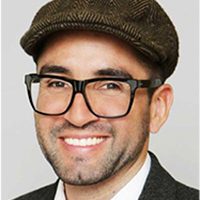 Chris Zepeda-Millan: He joins Luskin Public Policy. Zepeda-Millan is a political scientist and current professor of ethnic studies at UC Berkeley. His research focuses on social movements, immigration and communities of color, and has been published in American Journal of Political Science, Political Research Quarterly, Social Science Quarterly, and Politics, Groups and Identities. His book, “Latino Mass Mobilization: Immigration, Racialization and Activism,” was recently published by Cambridge University Press. Zepeda-Millan will be jointly appointed in the Department of Chicana/o Studies and will be working with the Latino Policy and Politics Initiative.
Chris Zepeda-Millan: He joins Luskin Public Policy. Zepeda-Millan is a political scientist and current professor of ethnic studies at UC Berkeley. His research focuses on social movements, immigration and communities of color, and has been published in American Journal of Political Science, Political Research Quarterly, Social Science Quarterly, and Politics, Groups and Identities. His book, “Latino Mass Mobilization: Immigration, Racialization and Activism,” was recently published by Cambridge University Press. Zepeda-Millan will be jointly appointed in the Department of Chicana/o Studies and will be working with the Latino Policy and Politics Initiative.

